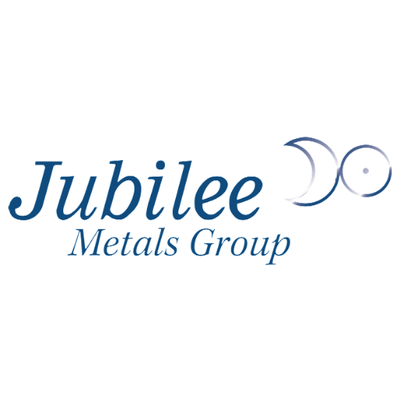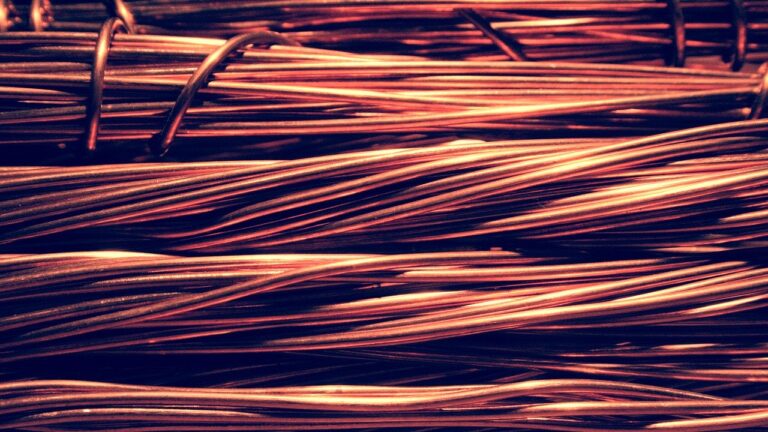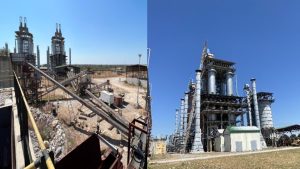A subtle shift is unfolding beneath the surface of the base metals market, and Jubilee Metals appears poised to capitalise. There’s an under-the-radar momentum building around copper that could offer discerning investors a compelling narrative, one far removed from headlines but rooted in long-term supply dynamics and sustainability pressures.
Jubilee’s strategic positioning feels remarkably timely. Copper, long celebrated for its conductivity and durability, has quietly assumed a starring role in the global transition toward cleaner energy and decarbonised infrastructure. Yet despite this growing demand, the realities of supply, complicated by geotechnical challenges, decay in existing reserves and rising environmental constraints, suggest an increasingly fragile balance. Jubilee Metals, with its innovative, resource-efficient recovery model, stands out as a sleeper in a sector already adapting to structural shifts.
The appeal of copper for modern economies is straightforward: as renewable energy systems, electric vehicle production and advanced telecommunications expand, the demand for high-performance wiring and heat exchange materials intensifies. But what’s less discussed is how this boom strains traditional mining setups that are slow to pivot. Jubilee’s modular, low-footprint processing facilities that reclaim copper from tailings and marginal resources cater precisely to this lag. This isn’t a fringe innovation, it’s a practical response to diminishing ore grades and the growing gap in primary mine output.
Jubilee’s approach gives investors a distinctive exposure to copper’s upside without the cost and geopolitical risks of greenfield mining. By focusing on efficient recovery from existing waste streams, Jubilee demonstrates how value can be extracted where many operators see challenge. This strategy embeds both cost discipline and sustainable credentials, two increasingly non-negotiable attributes in modern capital markets.
Macroeconomic conditions also play into the narrative. Inflationary pressure on commodity prices, alongside fiscal support for green infrastructure in key markets, heightens the probability of copper-friendly policies and smoother supply chain investment. Reports from physical markets indicate that copper stockpiles have tightened, while premiums over benchmark prices have widened—suggesting real-time constraints that Jubilee’s output could help alleviate. The outcome? A company positioned to benefit subtly but meaningfully from supply-demand imbalances, modest cost advantages and market sentiment swings.
Operationally, Jubilee’s model is less capital intensive, scalable and faster to commission compared to traditional mines. Those are key factors under scrutiny by capital allocators. With lower start-up risks and compelling unit economics, Jubilee can deploy modular refineries selectively, reinforcing its margin defensiveness and freeing up working capital to pursue complementary projects without overstretch.
Environmental and social governance (ESG) credentials reinforce the potential appeal to institutional investors. Jubilee’s remediation and recycling-focused model aligns naturally with broader decarbonisation goals, enabling it to tap into impact-focused funding pools. As reports on rising remnants of copper in industrial waste emerge, Jubilee’s pathway from waste to value becomes not just financially sensible but socially strategic.
From a valuation standpoint, Jubilee still trades at a constructive discount to peers with conventional open-pit or underground operations. The market may have yet to fully grasp how its agile model affords resilience to regulatory or commodity price shocks. For investors looking beyond cyclicality, this gap could close significantly if the company continues to execute on recovery rates and scales its footprint steadily across new sites.
Challenges are not absent. Jubilee’s reliance on securing adequate tailings resources requires constant pipeline development, stakeholder collaboration and rigorous permitting. But its ability to move more nimbly than bulk mining outfits offers an operational edge. Moreover, prolonged weakness in copper prices would test break-even assumptions, though the company’s flexible cost structure provides a certain buffer.
What might shift residue into meaningful outperformance is if global inventories continue to draw down or supply disruptions mount—whether through regulatory pushback, labour actions or geological hurdles at traditional mines. In that environment, marginal supply sources like Jubilee could gain outsized attention. As legacy supply falters, the relative attractiveness of a nimble, low-emission processing play becomes clearer. For investors recalibrating exposure towards copper’s structural scarcity, Jubilee Metals looks like a sophisticated inclusion.
Jubilee exemplifies a new breed of resource companies that combine environmental stewardship with practical economics. It doesn’t claim flashy upside, it offers dependable execution in a commodity that has stealthily become indispensable. For investors orienting toward long-duration resource plays with both sustainability and supply-side narratives, Jubilee is quietly offering a differentiated build-out in a sector demanding fresh solutions.
Jubilee Metals Group plc (LON:JLP) is a diversified metal recovery business with a world-class portfolio of projects in South Africa and Zambia. The Company’s expanding multi-project portfolio across South Africa and Zambia provides exposure to a broad commodity basket including Platinum Group Metals, chrome, lead, zinc, vanadium, copper and cobalt.











































